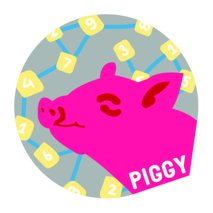Marie Curie Individual Fellowship funded by the European Commission Horizon 2020
Duration: April 2020 until March 2022
 Virtually all aspects of society, industry and science are significantly impacted by increasingly complex computers and the software that they run. A major objective within computer science is to ensure that these computer systems are formally correct by developing ways to prove that a system correctly implements certain given properties, or ways to construct such a system.
Virtually all aspects of society, industry and science are significantly impacted by increasingly complex computers and the software that they run. A major objective within computer science is to ensure that these computer systems are formally correct by developing ways to prove that a system correctly implements certain given properties, or ways to construct such a system.
In this domain of computer science, an important topic is parity games. Many real-world systems run continuously and properties for such systems are described in temporal logics such as linear temporal logic (LTL) and various logics derived from or related to LTL. Solving parity games computes whether a given system has a property specified in these temporal logics, or constructs a system that implements such a property.
Parity games are in addition a compelling subject for theoretical computer science because they are believed to be in the complexity class P; however, this has been an open question for over 20 years. In recent years, new algorithms have been discovered that solve parity games in quasi-polynomial time, while at the same time researchers have found quasi-polynomial lower bounds for several families of algorithms. A quasi-polynomial lower bound for all parity game algorithms implies a solution to the famous P versus NP problem.
In earlier work, I proposed the notion of a tangle and showed that existing parity game solving algorithm implicitly explore tangles when reasoning about how a player can force the opponent to move through the parity game from A to B. The aim of this project is to understand the inherent complexity of solving parity games algorithmically. The strategy to achieve this is to obtain fundamental insights into the structure of tangles, how they are handled by parity game solving algorithms and how they arise in practical games.
 This project has received funding from the European Union’s Horizon 2020 research and innovation programme under the Marie Skłodowska-Curie grant agreement No 893732.
This project has received funding from the European Union’s Horizon 2020 research and innovation programme under the Marie Skłodowska-Curie grant agreement No 893732.

